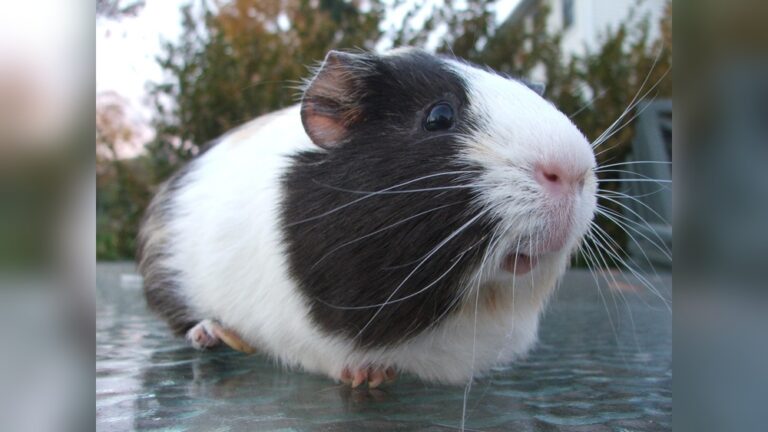Homes Of Capybaras: Discover Their Unique and Cozy Habitats
Have you ever wondered where capybaras, the world’s largest rodents, choose to call home? These gentle creatures live in some of the most fascinating places on Earth, and discovering their habitats can change the way you see nature.
If you want to learn where capybaras thrive, how they build their homes, and what makes their environment so special, you’re in the right place. Keep reading to uncover the secrets of capybara homes and get closer to these amazing animals than ever before.
Capybara Habitat Basics
Capybaras are the largest rodents in the world. They live in specific places that suit their lifestyle. Understanding their habitat helps us learn how they survive and thrive. Their homes are close to water and plants. These areas provide food and safety for capybaras.
Capybaras spend much of their time in and near water. They need to stay cool and safe from predators. Their habitat supports their social nature and daily needs.
Geographic Range
Capybaras live mainly in South America. Countries like Brazil, Venezuela, and Colombia have large capybara populations. They are found in lowland areas with plenty of water. Their range extends from Panama to Argentina. This wide area shows their ability to adapt to different climates.
Preferred Environments
Capybaras prefer places near rivers, lakes, and swamps. Wetlands provide food and protection. They like areas with tall grasses and plants. These plants offer both food and cover. Open grassy fields near water are ideal for them. The water helps them escape danger and stay cool. Forest edges and flooded savannas are also common habitats.
:strip_icc()/GettyImages-590084935-57fc0b545f9b586c35c9daae.jpg)
Credit: www.thesprucepets.com
Water’s Role In Capybara Homes
Water plays a vital role in the homes of capybaras. These animals depend on water for safety, food, and comfort. Their homes are often near water sources, which shape their daily lives and habits. Understanding water’s role helps us learn how capybaras survive and thrive in the wild.
Rivers And Lakes
Capybaras prefer homes near rivers and lakes. These water bodies offer a steady supply of fresh water. The slow-moving water allows capybaras to swim and escape predators easily. They spend much of their time in the water to stay cool and clean. Rivers and lakes also provide rich vegetation for food.
Wetlands And Marshes
Wetlands and marshes serve as perfect habitats for capybaras. These areas have shallow water and tall grasses. The water protects capybaras from threats and keeps their skin moist. Wetlands supply plenty of plants for eating. The mix of water and land creates a safe and rich environment for capybara families.
Shelter And Nesting Spots
Capybaras need safe places to rest and protect themselves. Their shelters and nesting spots play a big role in their survival. These homes offer protection from predators and harsh weather. Capybaras are clever in choosing and making their shelters. They use natural elements and sometimes dig their own spaces.
Natural Cover
Capybaras often use plants and trees as natural cover. Tall grasses and bushes hide them from threats. These plants also provide shade from the hot sun. Capybaras stay close to water, where reeds and shrubs grow thick. This natural cover helps them stay safe and cool.
Burrows And Dens
Capybaras sometimes dig burrows near water sources. These dens give extra protection during bad weather. The burrows are shallow but wide enough for a group. They line the dens with leaves for comfort. Burrows keep capybaras hidden from predators at night.

Credit: www.youtube.com
Social Living Spaces
Capybaras live in groups that help them stay safe and happy. Their homes are not just places to rest. These spaces are full of social activity and cooperation. Understanding their social living helps us see how they survive in the wild.
These animals share their homes with family and friends. The bonds they form are strong and last long. They spend time together grooming and playing. This keeps the group close and healthy.
Group Dynamics
Capybara groups usually have 10 to 20 members. Each group has a clear social order. The dominant male leads and watches for danger. Females and younger capybaras follow his lead.
Group members communicate with sounds and body language. This helps them avoid fights and stay united. The social bonds reduce stress and improve survival chances.
Shared Territories
Capybaras share large areas near water. These territories include feeding spots and resting places. Sharing space helps the group find food and water easily.
The group marks its territory with scent. This warns other animals to keep away. Sharing space also means working together to protect their home.
Adaptations For Comfort
Capybaras have special ways to stay comfortable in their homes. These adaptations help them live well in their natural environment. Their bodies and behaviors work together to keep them safe and cool.
These features are important because capybaras often live in hot and wet places. Their adaptations help them handle heat and avoid dangers. Let’s explore how they manage these challenges.
Thermoregulation
Capybaras control their body temperature in smart ways. They spend a lot of time in water to cool down. Water helps lower their body heat quickly.
Their fur is thin and coarse, allowing heat to escape. They rest in the shade during the hottest parts of the day. This simple behavior keeps them from overheating.
Protection From Predators
Capybaras use their homes to hide from enemies. They build nests near water for quick escapes. Water serves as a safe refuge from many land predators.
They live in groups to watch for danger together. This teamwork helps them warn each other fast. Their quiet and calm nature makes it hard for predators to spot them.

Credit: www.nytimes.com
Human Impact On Habitats
Capybaras live near water in grassy areas. Their homes are changing fast. Humans affect these habitats a lot. Farms, cities, and roads take up space. This change makes it hard for capybaras to find food and safety. Understanding how humans impact these places helps protect capybaras better.
Habitat Loss
Many forests and wetlands disappear every year. Farmers cut trees to grow crops. Builders turn land into homes and shops. This destruction shrinks capybaras’ living space. Less space means fewer places to hide from predators. It also lowers the plants they eat. Habitat loss forces capybaras to move or face danger.
Conservation Efforts
People start saving habitats for capybaras and other animals. Protected parks keep land safe from building. Groups plant trees and restore wetlands. They teach others why capybaras need help. These efforts give capybaras a chance to live and grow. Care and action can keep their homes safe for the future.
How Smart Pets Lover Can Help You with Homes Of Capybaras
Learning from Capybara Homes: Practical Insights for Animal Lovers
Understanding the natural homes of capybaras offers more than just curiosity—it invites us to appreciate the delicate balance between water’s role and shelter in their lives. Observing how capybaras create social living spaces near water sources teaches us about the importance of environment in animal comfort and wellbeing. These insights can inspire pet parents to think critically about how their own pets’ habitats support their natural behaviors and needs.
At Smart Pets Lover, we believe every pet parent deserves to feel confident in creating spaces that nurture their companions’ instincts and comfort. Whether it’s replicating cozy nesting spots or ensuring access to water for hydration and play, these small adjustments can make a big difference. If you want to learn more about how to provide enriching environments for your pets or have questions about habitat setup, you can reach out to expert communities or trusted resources for guidance.
After all, every wag, purr, and chirp tells a story shaped by the spaces they call home—just like the capybaras’. Embracing these lessons can deepen your connection with your furry or feathered friends, making every moment together even more meaningful.
Frequently Asked Questions
Where Do Capybaras Build Their Homes?
Capybaras build homes near water bodies like rivers, lakes, and swamps. They prefer dense vegetation for shelter. These locations provide safety and easy access to food and water.
How Do Capybaras Protect Their Homes?
Capybaras use water as a natural defense against predators. They stay close to water where they can quickly escape. Their homes are often hidden in thick plants for extra protection.
What Materials Do Capybaras Use For Their Homes?
Capybaras mainly use natural vegetation like grass and reeds. They create simple nests or resting spots near water edges. Their homes are not complex structures but functional for survival.
Do Capybaras Live Alone Or In Groups?
Capybaras live in groups called herds, usually 10-20 members. Group living helps them protect their homes and detect predators early. Social behavior is key to their survival strategy.
Conclusion
Capybaras live in warm, wet places near water. They build homes close to rivers, lakes, or marshes. These homes keep them safe from predators and harsh weather. Capybaras often share their space with family or other animals. Their homes show how they adapt to nature well.
Understanding where capybaras live helps us protect them better. Their simple homes tell a story of survival and community. Exploring capybara habitats brings us closer to nature’s wonders.






